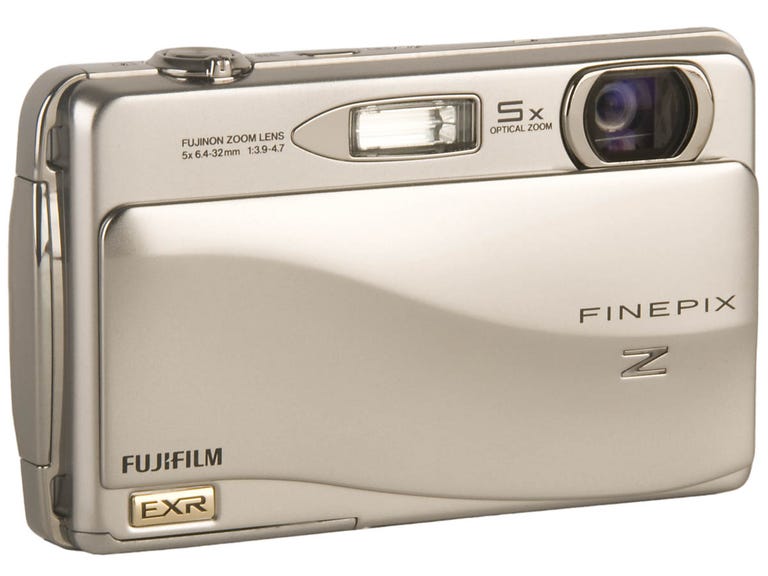 Why You Can Trust CNET
Why You Can Trust CNET Fujifilm FinePix Z700EXR review: Fujifilm FinePix Z700EXR
The FinePix Z700EXR offers good value for money, packing in a 12-megapixel sensor, a 5x optical zoom and a touchscreen interface. While Fujifilm's EXR high-sensitivity and high-dynamic-range modes aren't as impressive as they once were, it's still a decent snapper
The Fujifilm FinePix Z700EXR is a smart, all-metal, super-slim camera with a 12-megapixel sensor, 5x optical zoom and touchscreen interface. It also sports Fujifilm's EXR sensor, which can pair up pixels to provide extra sensitivity and lower noise at high ISOs, or increased dynamic range in high-contrast lighting. At a price of around £180, the Z700EXR looks like pretty good value.
The Good
The Bad
The Bottom Line
Touch it up
In terms of build quality and finish, the Z700EXR isn't in quite the same league as Sony's lush little Cyber-shot TX-series cameras. But the Z700EXR isn't far off, and it's much cheaper. The lacquered metal finish is attractive and, around the back, there's a large, 89mm (3.5-inch), 16:9, widescreen LCD touchscreen with a curious mirrored finish, although it's perfectly easy to see when the camera's powered up.

There are no physical controls, so you make all your adjustments by tapping icons and menus on the screen. The sensitivity is just about right, and the camera beeps to provide audio feedback. Rather cleverly, the camera rotates the icons if you turn it clockwise to take a shot vertically. Annoyingly, this doesn't work if you turn the camera anti-clockwise.
Facebook fans can tag their favourite shots on the camera and use the bundled software to upload them automatically. You can do the same with your YouTube clips. The face-detection system is good too, easily recognising faces in profile, and proving able to identify individuals too. It can even recognise your pets' faces -- dogs and cats only, mind -- although not, for some reason, when dogs and cats are in the same frame.
The 'touch & shoot' mode is really cool. You frame the picture, press your finger on the part of the screen you want to focus on, and the camera focuses and fires in a single action. It's great for photographing off-centre subjects, and such a natural way of shooting with a touchscreen interface that you may never go back.
It's complicated
Also available are full auto, scene, manual (with access only to settings like ISO and white balance), and EXR auto modes. But why is the EXR auto mode separate? Either it's a good thing or it isn't -- digital cameras are confusing enough without offering two different ways to take photographs and precious little advice about which is best. It's as if Fujifilm doesn't quite have enough confidence in the EXR technology to really go for it.
Maybe now's the time to pack the EXR tech in. It looked great when it first appeared in the FinePix F200EXR, but that was more than a year ago and that camera used a bigger, 1/1.6-inch sensor. The 1/2-inch sensor in the Z700EXR is rather less impressive. With or without the EXR high-sensitivity option, the camera lags behind the best of the competition at high ISOs. Also, while the EXR high-dynamic-range option is effective, it's not enough on its own to justify the complexity of the extra modes and the drop in resolution from 12 megapixels to 6. The best pictures come from the standard, 12-megapixel shooting modes anyway.
There are a few other issues, including the fact that the interface looks rather blocky, despite having a 460,000-pixel resolution. Also problematic are the lack of a wide-angle zoom and a degree of purple fringing towards the edges of pictures. In the end, the Z700EXR comes across as ever so slightly second-division.
Conclusion
If we ignore Fujifilm's EXR sensor technology, perhaps it'll go away. It looked good initially, but the quality advantage just isn't there any more and it only adds complexity. Fortunately, the FinePix Z700EXR can also be used as a perfectly ordinary, 12-megapixel camera, and that's really when it's at its best.
Edited by Charles Kloet
